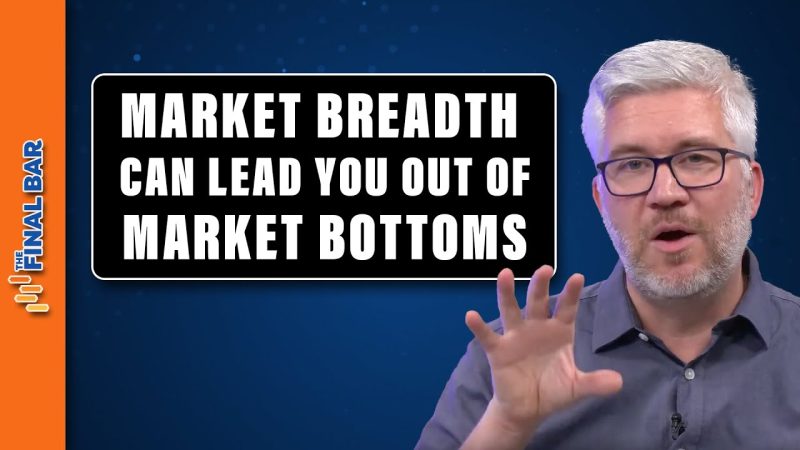The stock market is a notoriously volatile means of investing, and the ability to properly identify imminent market downturns can allow investors to better capitalize on their investments. One of the most useful tools in spotting signs of a market bottom is the use of market breadth indicators.
Market breadth indicators measure the trading activity of a given stock market index on a daily basis. They are used to analyze the relationship between buy and sell signals, as opposed to the overall market trends. Market breadth indicators can provide an investor with insight into when a stock market is about to reverse a downward trend.
The most common type of market breadth indicator is the Advance-Decline (AD) line, which is based on the number of stocks that are advancing compared to those that are declining. When the AD line is increasing, it is considered bullish, indicating that more stocks are gaining than falling. Conversely, when the AD line is falling, it is considered bearish, suggesting that more stocks are losing than gaining. When the AD line is made up of an even number of advancing and declining stocks, it is referred to as a “neutral” market.
A bearish AD line is indicative of an extreme market bottom, meaning that the market is likely to reverse its downward trend and produce an upturn. This can be a great time for investors to capitalize on the market, as stocks are likely to increase in value.
Investors should also be aware of “breadth thrust” indicators, which measure how quickly the AD line is dropping. When an indicator is showing a significant decline in a short period of time, it suggests that the market is experiencing a strong downward trend and may be heading towards a bottom.
The use of market breadth indicators can be a powerful tool in identifying when a stock market is about to reverse a downward trend and head towards a bottom. Investors should monitor these indicators on a daily basis and act accordingly when a signal is spotted. Taking advantage of such signals can allow an investor to make more informed decisions and maximize their return on investment.

